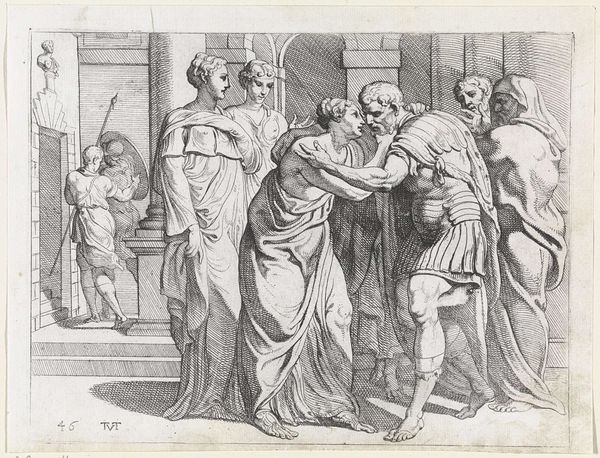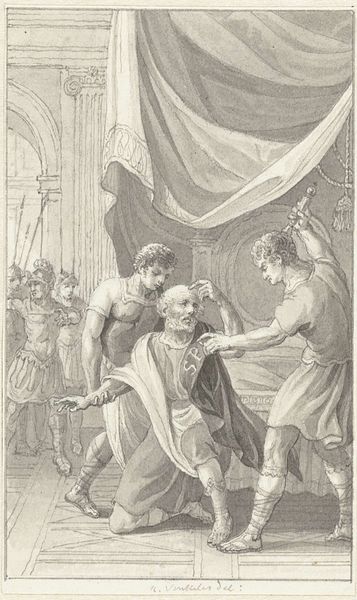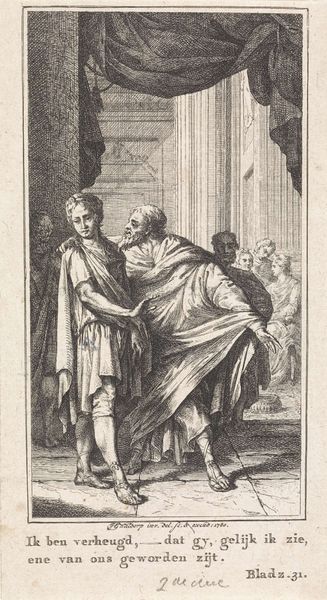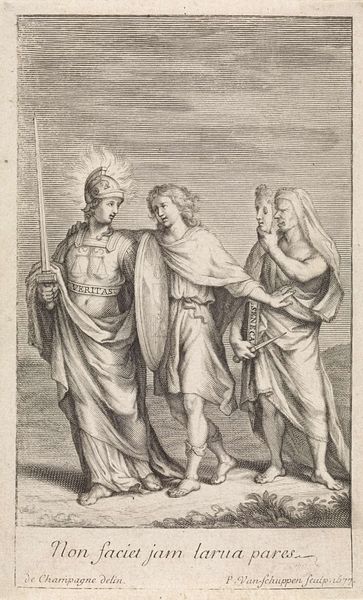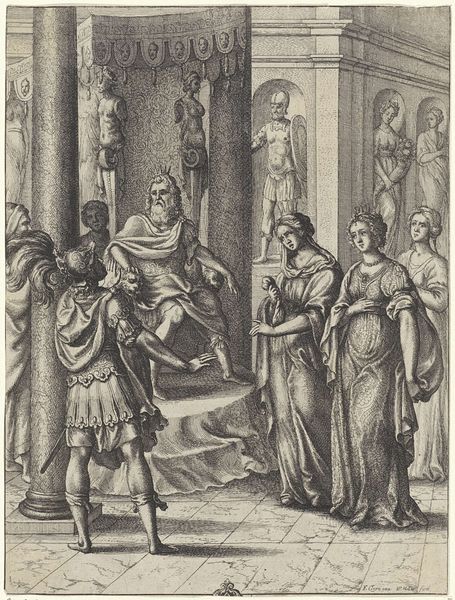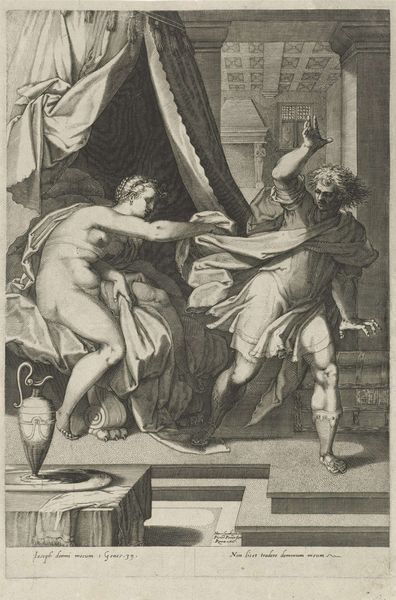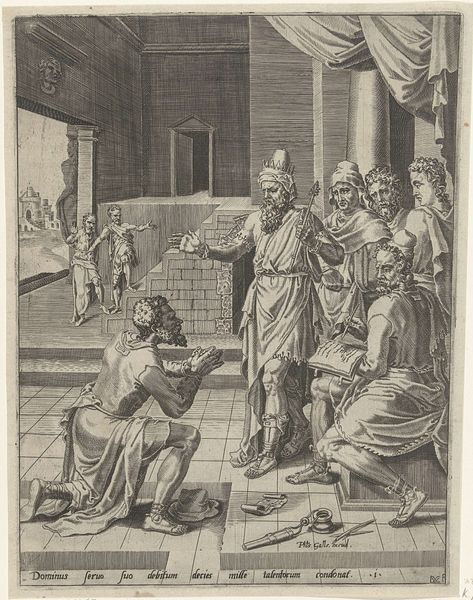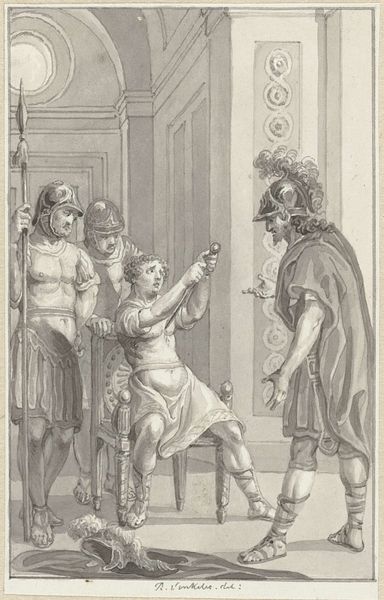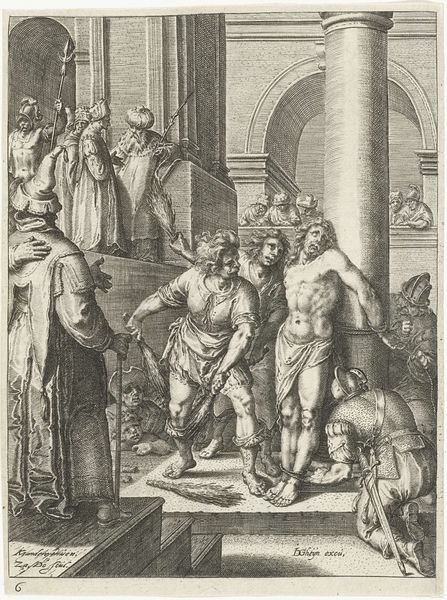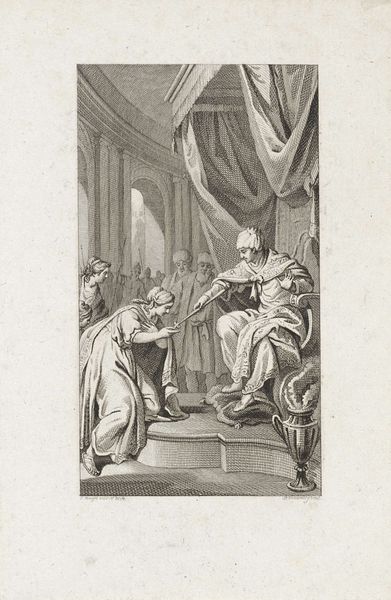
drawing, pencil
#
portrait
#
drawing
#
pencil sketch
#
figuration
#
pencil
#
line
#
history-painting
#
academic-art
Dimensions: height 135 mm, width 85 mm
Copyright: Rijks Museum: Open Domain
Curator: Ah, here we are, in front of Reinier Vinkeles's "Alexander Severus en Arabinus," a drawing completed in 1804, now residing here at the Rijksmuseum. Editor: It’s striking how much the medium affects the narrative. There’s a delicacy to the pencil work, even a vulnerability, that tempers the scene’s apparent tension. Is he sending someone away? Curator: Precisely! This historical tableau depicts Emperor Alexander Severus banishing Arabinus, likely due to complaints regarding his overzealous tax collection. It’s interesting how Vinkeles utilizes the "do unto others" inscription above the doorway to further underscore the injustice and political theatre. Editor: "Do unto others…” yes. But I feel something else, almost…stage fright. The figures flanking Severus look unsure, hesitant to partake in whatever’s unfolding. It’s more intimate than a grand history painting, isn't it? Curator: I would agree that there’s something compelling about its restraint. In the late eighteenth and early nineteenth centuries, history painting, in its many forms, played a vital role in shaping public virtue, demonstrating moral lessons for civic life. Pencil sketches like this often served as preliminary works or independent pieces consumed within elite social circles. Editor: You’re right. It feels like witnessing a private rehearsal before the spectacle begins, a behind-the-scenes glance. I find the theatrical blocking and gesture of Alexander particularly compelling; very deliberate but very calculated. Curator: That interplay between calculated gesture and spontaneous emotion is, for me, exactly what gives the drawing its lingering appeal. It makes you think about power, justice and the people that can influence them. Editor: The way the figures inhabit the architectural space gives us such an open sense of history! It gives us space for our ideas and interpretation to exist inside this classical portrayal of injustice. I can almost imagine stepping inside! Curator: Absolutely! Perhaps this ability to conjure and reimagine different stories, whether private or public, is something we need to reconsider about Dutch Golden Age painting altogether. Editor: Agreed, a timely re-evaluation is always a valuable prospect, and Vinkeles, for all his classical poise, makes an extremely valuable case for that. Thank you for this interesting journey.
Comments
No comments
Be the first to comment and join the conversation on the ultimate creative platform.
